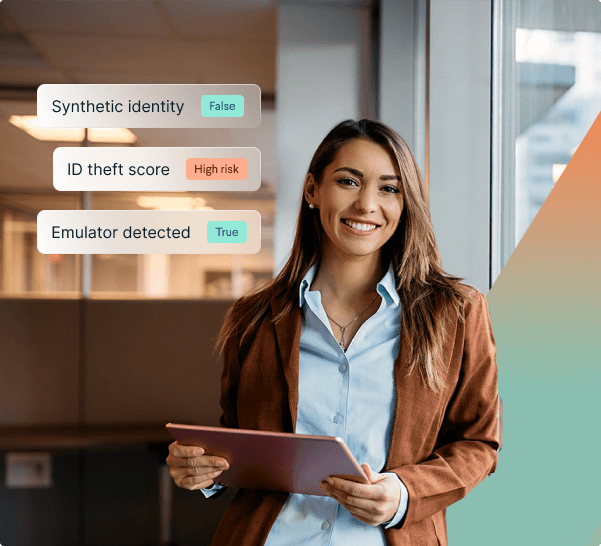What is transaction monitoring in AML? | SmartSearch
By SmartSearch

In the modern world of online banking, financial crime has evolved, and so have measures to prevent it. Anti Money Laundering or AML measures are at the forefront of the fight against fraud and illegal activity, and one of the key preventative processes is transaction monitoring. But what is transaction monitoring, and how does it stop criminals from committing financial crime?
In this blog, we’ll explore how monitoring transactions is a crucial defence, what the process involves and the best practices for your financial institution to adopt to keep your customers and organisations safe.
For an effective and all-inclusive fraud prevention system, we have our own advanced AML software at SmartSearch. Made to detect suspicious activity in seconds, this technology will become your first line of defence against money laundering.
What is Transaction Monitoring?
Transaction monitoring is the formal process of reviewing and tracing financial transactions to check for any signs of suspicious activity or behaviour that may indicate financial crime, such as fraud or money laundering. Transaction monitoring is a significant aspect of AML processes and is an enforced compliance requirement for all financial institutions.
Transaction monitoring is handled both manually by dedicated officers and by smart automated systems. Thousands of accounts are monitored each day, and any unusual transactions or suspicious activity are detected and then flagged appropriately.
Why is Transaction Monitoring Important for AML?
There are a number of purposes for transaction monitoring, which make it an essential part of AML procedures. Transactional monitoring is needed for:
Compliance measures
The Financial Action Task Force, alongside other authorities, has made it a legal requirement for financial institutions to have strong AML processes, and this includes proper transaction monitoring. Businesses that fail to identify fraud due to poor monitoring can now face prosecution alongside other legal consequences and damage to reputation.
Flag suspicious activity
Ongoing monitoring software is designed to analyse transactions and user behaviour that could indicate suspicious activity and warrant further investigation. This could be things like large transfers to offshore accounts or withdrawing large sums of money.
Enhance customer relationships
Customers and clients are more likely to trust your services and institution if you have proven safeguarding and preventative measures against financial crime. Not only does this help retain customers and keep their funds safe, but it also allows your company to grow.
Prevent money laundering
The main purpose of AML software and processes is to prevent money laundering and financial crime. Spotting abnormalities in personal and business accounts is a crucial way of preventing crimes at an early stage without causing loss of funds.
The Forms of Transaction Monitoring
Real Time Monitoring
This refers to transactions that are analysed as they occur. This is an important way to prevent crime immediately and help stop fraudulent or illegal transactions as they happen. Real-time monitoring is essential for online banking and fintech platforms to help prevent fraud.
Periodic Monitoring
Transactions are monitored periodically at set intervals. This can be daily, weekly or monthly, etc, and is used to help detect patterns in transactions that would otherwise be missed with real-time monitoring.
How Does Transaction Monitoring Work?
Transactional monitoring involves collecting data on users and bank transactions, analysing it and determining if certain behaviour indicates risk.
1. Data Collection
Transaction monitoring begins by collecting transactional data. This includes everything from deposits to withdrawals, card payments and transfers. All of this information is logged onto your AML system. The more data that is collected, the more effective your monitoring will be.
2. Risk Assessment
Customer Due Diligence and KYC checks are an important part of the monitoring process. These checks drive deeper into investigating customers and assigning them risk scores. These investigations include:
- Source of funds checks - where income or savings originate from, e.g. salary from employment, etc.
- Account activity - Checking any patterns like regular transactions and deposit amounts.
- Location checking - For high-risk countries known for financial crimes.
3. Automated Alerts and Escalation
When a transaction hits a certain number of triggers for it to be deemed suspicious, the system will generate an alert for manual review. This helps to identify threats that may be missed by manual checks and can also help to reduce workloads.
4. Investigation and Reporting
Once a system has created an alert, investigations can begin to determine if there is any real threat or suspicious activity. If officers confirm suspicious activity, the next step is to file a Suspicious Activity Report. This is forwarded to the authorities, who then escalate investigations.
How to conduct effective transaction monitoring
There are a number of challenges related to transaction monitoring, and these need to be overcome to create an effective monitoring system. Institutions should use these to create an effective AML system:
Focus on a risk-based approach
Invest in resources that investigate high-risk transactions and customers. The more detailed and sophisticated the system, the less likely it is to provide false positives and take up manual checking time.
Regularly review systems
Continuously check for new AML rules and regulations and update training and processes to align with new laws or threats.
Invest in AI and AML software
Technology isn’t always the enemy, and advanced AML software can help streamline customer checks and strengthen the accuracy of risk assessments. AI can also identify and learn new patterns that manual checks may miss.
Ensure strong and compliant transaction monitoring with the right tools
Effective AML compliance is impossible without proper transaction monitoring processes in place. Your firm needs to continuously analyse transactions, stay on top of criminal trends and act on new regulations to keep customers and your own brand safe. Although this process is tricky as financial crime continues to grow, risk-based approaches and effective technology can be the cornerstone for preventing fraud.
At SmartSearch, our advanced AML technology stays up to date on the newest trends and compliance laws and can detect anomalies and suspicious activity from customer accounts in a matter of seconds. If you want to experience the power of our accurate AI-powered software, request a free demo today or get in touch for more information.
See it in action
Ac cras tristique malesuada odio porta orci sollicitudin. Magna nisl vitae ut tincidunt sit ipsum at aenean. A hendrerit nec purus accumsan enim.
